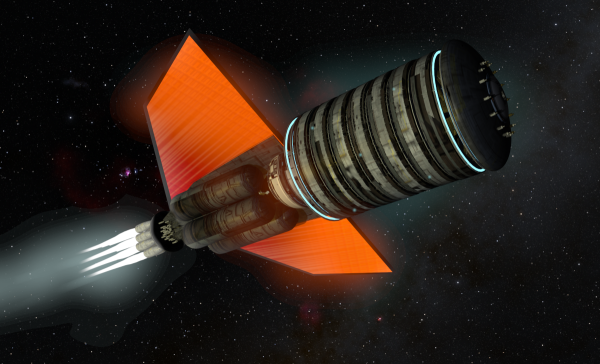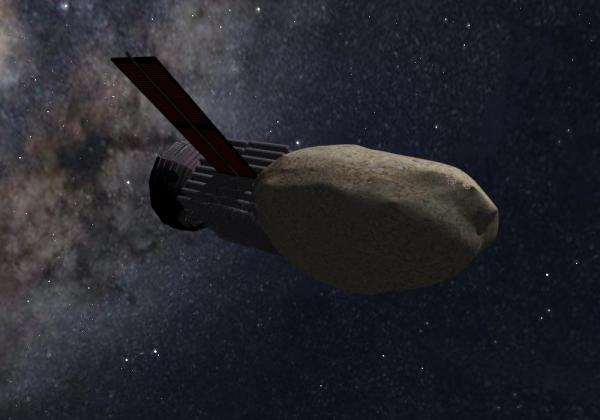BY LETTER
Generation Ship
Culture and Society > Cultural Factors > Interstellar Colonization
Technology > Application > Transportation > Interstellar Transport
Technology > Application > Transportation > Ships
Technology > Application > Transportation > Interstellar Transport
Technology > Application > Transportation > Ships
Huge, slow, self-contained interstellar ships taking more than one lifetime to arrive | |
 Image from Steve Bowers | |
| The Endurance, a generation Ship on its way to Chara | |
Enormous constructs supporting a breeding population* of humans and associated food producing systems; they are extremely massive, and take fantastically large amounts of energy to accelerate up to interstellar speeds. Slower ships use less energy for propulsion per kilogram of payload, but they then have to support populations of people or much longer — perhaps thousands of years on a typical slow interstellar flight.
Most Generation ships rotate to provide centrifugal gravity for the inhabitants, who will live their entire lives on board such a vessel unless they are among the generation which finally arrives at the destination. The only exception to this rule are generation ships populated by sophonts who are comfortable in microgravity, such as space-adapted humans.
Generation Ships have often been constructed from asteroids of various kinds; rocky asteroids provide material for soil-based agriculture, and also protect against cosmic radiation. Metallic asteroids on the other hand are, or can be made, structurally strong and can withstand greater acceleration. In most cases, however, the raw material of the asteroid must be disassembled and redistributed around the outside of the ship, to ensure that the rotating sections of the ship are symmetrical and properly balanced.
Long flights require much more energy to achieve a closed ecological life support system; the absolute minimum energy requirement for a human is eight megajoules per day. None were launched before the Great Expulsion, some few were launched after that event, including Valhalla Habitat. In most cases the Generation ships arrived much later than the lighter, faster hibernation ships and others.
 Image from Steve Bowers | |
| The Valhalla, a Cronosian generation ship | |
In the Current Era true generation ships are rarely used; more common are world ships and civilisation ships, which travel much faster using more advanced methods of propulsion, and are populated by sophonts who generally have much longer lifespans. In any case, most worldships are frequently in contact with other, smaller, faster ships that can ferry passengers to nearby worlds and habitats, so the inhabitants of such a vessel are not obliged to remain on board if they do not wish to.
Related Articles
Appears in Topics
Development Notes
Text by Steve Bowers
Initially published on 02 February 2010.
Initially published on 02 February 2010.
Additional Information






